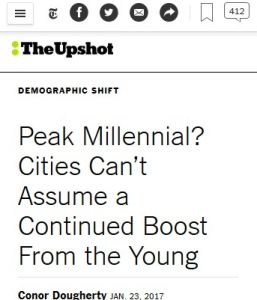Зарегистрируйтесь на getAbstract, чтобы получить доступ к этому краткому изложению.

Зарегистрируйтесь на getAbstract, чтобы получить доступ к этому краткому изложению.
Conor Dougherty
Peak Millennial?
Cities Can’t Assume a Continued Boost from the Young
The New York Times, 2017
Что внутри?
New research suggests millennials have had enough of city life and may soon be on the move back to their childhood suburbs.
Recommendation
Young people rejecting the lifestyle of their parents is nothing new; neither is waking up in your 30s and realizing that your parents were right after all. Since the late 1990s, countless millennials have ditched their parents’ suburban lifestyle and poured into inner cities, rejuvenating downtown neighborhoods and triggering a construction boom. The conventional wisdom has been that millennials would remain in downtown areas indefinitely. Yet San Francisco-based New York Times correspondent Conor Dougherty finds growing evidence that this may not be the case. getAbstract recommends Dougherty’s article to real estate professionals, urban developers and baby boomers hoping to see their grandchildren move closer.
Summary
About the Author
Conor Dougherty is a San Francisco-based technology correspondent for The New York Times.


















Comment on this summary